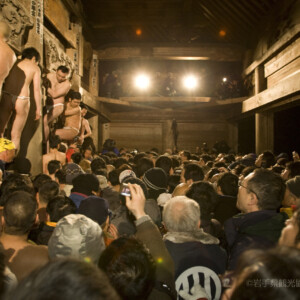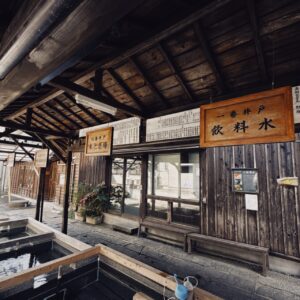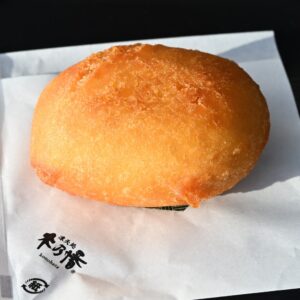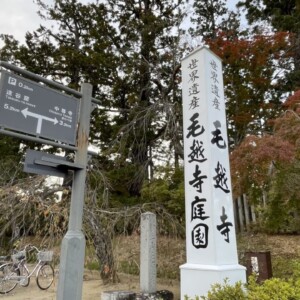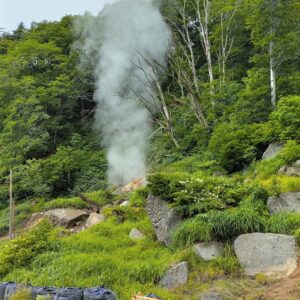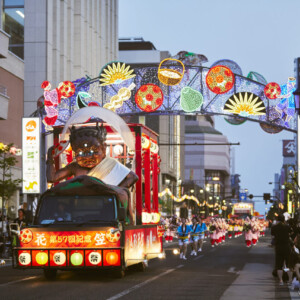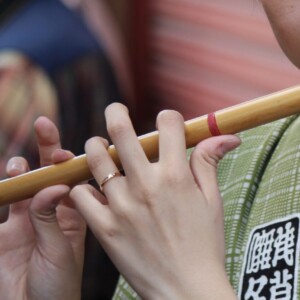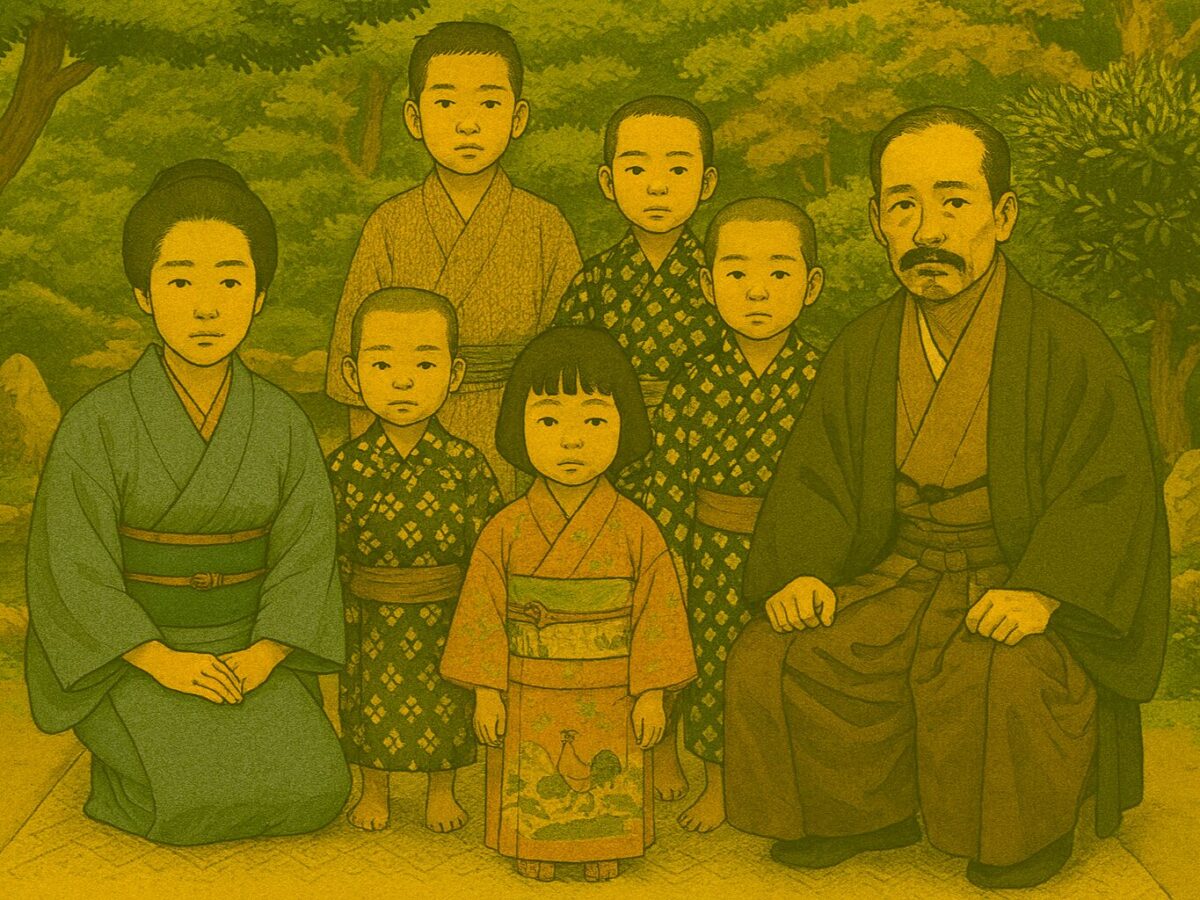
30 Surnames with Roots in Iwate Prefecture's Prestigious Families
table of contents
- 1 30 Surnames Connected to Prestigious Families in Iwate Prefecture (in Alphabetical Order)
- 1.1 Aso Swamp
- 1.2 Anetai (elder belt)
- 1.3 Ichinohe
- 1.4 Iwabuchi
- 1.5 Esashi
- 1.6 Oikawa
- 1.7 Ota
- 1.8 Otsuki
- 1.9 Kasai
- 1.10 Kashiyama
- 1.11 Kaneko
- 1.12 Kikegawa River
- 1.13 Kuji
- 1.14 Kuzumaki
- 1.15 Kunohe
- 1.16 Small pear
- 1.17 Shiba
- 1.18 Torihata
- 1.19 Nakamura
- 1.20 Narasaka
- 1.21 Narayama
- 1.22 Nanbu
- 1.23 Hamada (Hamada)
- 1.24 Hienuki
- 1.25 Maekawa
- 1.26 Murai
- 1.27 Murakami
- 1.28 Yaehata
- 1.29 Absent
- 1.30 Waga
Every place across Japan, there are prestigious and famous families who are rumored to be so-called "local famous people." Even if you say, "We are a very ordinary family," it is not uncommon to find that if you trace our ancestors carefully, they actually belong to a family of venerable samurai.
In this article, we look into the surnames of prestigious families in Iwate Prefecture. If you have ever had a classmate with a surname like that, it's possible that they actually come from a good family.
30 Surnames Connected to Prestigious Families in Iwate Prefecture ( in Alphabetical Order)
It seems that the prominent families of Iwate Prefecture in the north are families related to the Nanbu clan, while in the south there are many families of local clans belonging to either the Date clan or the Kasai clan.
Aso Swamp
The Ashikaga clan, descendants of Fujiwara no Hidesato, traces its roots to Asonuma Shiro Hirotsuna, the fourth son of Ashikaga Aritsuna, who ruled Asonuma in Aso County, Shimotsuke Province (present-day Asanuma-cho, Sano City, Tochigi Prefecture), which it called Asonuma or Asonuma.
Asonuma Shiro Hirotsuna distinguished himself in the Oshu War of 1189 and became the lord of Tono no Yasu (the twelve districts of Tono) in Hei County, Mutsu Province, but he ruled as a magistrate without actually going to the area. Hirotsuna's second son, Chikatsuna, later built Yokota Castle on Mount Gomado (present-day Matsuzaki-cho, Tono City), and his descendants subsequently settled in Tono.
Anetai (elder belt)
A local lord from Nukabe County, Mutsu Province (present-day eastern Aomori Prefecture to northern Iwate Prefecture). Based in Aneobi Castle, which was located in Aneobi-jikan, Ichinohe Town, Ninohe County, Iwate Prefecture, he belonged to the Kunohe clan.
the Kunohe Rebellion of 1591. He committed suicide when Anedai Castle fell.
Ichinohe
The Nanbu clan began when the eldest son of the first head of the Nanbu clan, Mitsuyuki, Yukitomo, was an illegitimate son (a child born to someone other than the legal wife) and was therefore unable to inherit the family headship, and was based in Ichinohe-go (present-day Ichinohe Town, Ninohe County). During the reign of the second head, Yoshizane, the family built Ichinohe Castle and used it as their base, dominating the southern part of Nukabe County.
Like the Anedai clan mentioned above, Ichinohe Castle was attacked by Nanbu Nobunao and fell to him for siding with the Kunohe clan in the Kunohe Masazane Rebellion
It is said that the main line of the Ichinohe clan was cut off in this way, but there are many branches of the Ichinohe clan, such as Arakida, Hiradate, Yoriki, Horikiri, Sentoku, Yagisawa, Tsugaruishi, Enatsunagi, Neisawa, Enatsunagi, Noda, Heiguchi, Taneichi, Choushi, Taniuchi, Nakamura, Asaseishi, and Juuniya, and some of these are said to have reverted to their original surname of Ichinohe after the Meiji period.
Iwabuchi
A local lord of Iwai County, Mutsu Province, with roots in Iwabuchi, Sarushima County, Shimousa Province (present-day Sarushima County, Ibaraki Prefecture). the Battle of the Yellow , from the Kamakura period onwards.
From then on, the clan spread throughout Iwai County and prospered, but it is said that the clan was dispersed when Toyotomi Hideyoshi carried out the Oshu Punishment in 1590.
Esashi
A local lord of Esashi County, Mutsu Province. A branch of the Kasai clan, they ruled Esashi County for generations, based in Iwayado Castle (present-day Iwayado Tateshita, Esashi, Oshu City). In 1590, Toyotomi Hideyoshi confiscated their territory during the Oshu Shioki (political punishment) and fell into decline. After the Edo period, they became samurai of the Nanbu Domain.
Myojiyurai.net which lists the number of people with the surname nationwide based on government statistics and national telephone directory data , there are currently around 1,400 people with the surname Esashi nationwide, with around 30%, or around 600 people, living in Miyagi Prefecture.
Oikawa
The Oikawa clan, who ruled over the Iwai District of Mutsu Province (present-day Ichinoseki City, Hiraizumi Town, Nishiiwai District, and part of Oshu City), were based in Okitano, Iwai District, and were known as the "Okita-Oikawa Party,"
In 1559, he had a dispute with Chiba Saburo Nobuchika and was punished with the confiscation of his territory, but he was dissatisfied with this and the "Kashiwagi Castle Incident" occurred. Kashiwagi Castle was suppressed by the Ohara clan and the Oikawa clan was defeated.
Ota
He was an Okudama caster from Kamiokudama Village, Iwai County (present-day Senmaya Town, Ichinoseki City). He is said to be a descendant of Tenmei casters, and had sales channels from northern Kanto to the Shinetsu region. After the Meiji period, he manufactured pots and kettles under the name Kamikaneya
Otsuki
He was originally a descendant of the Terazaki clan, a branch of the Kasai clan, and a vassal of the Kasai clan, but returned to farming in Yamame Village, Iwai County (present-day Ichinoseki City) during the Edo period.
The main family passed on the position of chief physician for generations, while the branch family became a medical family and produced doctors for the Ichinoseki domain, and subsequently produced many talented people, including Chinese scholars and Japanese linguists.
Kasai
A large local lord (a local feudal lord with an area of several counties) who ruled central Mutsu Province (the area stretching from the Sanriku coast of Miyagi Prefecture to the southern part of Iwate Prefecture today).
The family was founded by Kasai Kiyoshige, the third son of Toshima Kiyomoto (Kiyomitsu), head of the Toshima clan, a vassal of the Musashi and Shimousa provinces during the Kamakura period, who took the name Kasai and owned the territory of Kasai Mikuriya in Shimousa province (currently the area around Katsushika, Edogawa, and Sumida wards in Tokyo). After distinguishing himself in the Oshu Wars and the downfall of the Oshu Fujiwara clan, he was appointed as the Oshu Magistrate and settled in Mutsu province, where he was granted a territory.
During the Sengoku period, the seven counties of ). However, its territory was confiscated during Toyotomi Hideyoshi's Oshu Shioki (1590), and the death of the 17th head of the clan, Kasai Harunobu, in 1597 meant that the Kasai clan as a feudal lord was wiped out.
Kashiyama
A local lord from Isawa County, Mutsu Province. There are various theories about his origins, but they are unclear. He served the Kasai clan for generations and based his base in Obayashi Castle (present-day Kanegasaki Town, Isawa County, Iwate Prefecture). He was a senior vassal of the Kasai clan, on a par with the Esashi clan, and at one point boasted power exceeding that of his lord's family by siding with Date Harumune during the Tenbun Rebellion of the Date clan.
However, a succession dispute arose and the family gradually weakened, and as a result of Toyotomi Hideyoshi's Oshu Shioki, they were stripped of their titles along with their master, the Kasai family, and during the Edo period they became samurai of the Nanbu domain.
Kaneko
Minoya in Hizume, Shiwa County (now Shiwa Town) . He was successful as a kimono merchant and later entered the financial industry. The fourth generation was appointed as the treasurer of the Nanbu Domain, and he went by the name Kaneko as a samurai and Seki as a merchant.
In 1849, when the feudal lord Nanbu Toshitake became the governor of Mino, the store name was changed from Minoya to Ikuya
Kikegawa River
They were local lords from Iwai County, Mutsu Province. They originated in Kamegawa Village, Senda-sho, Shimousa Province (present-day Chiba Prefecture), and are said to have accompanied Kasai Kiyotoki, the first head of the Kasai clan, on his journey to Oshu.
Resisting Toyotomi Hideyoshi's Oshu Shioki (1590), the Kamegawa clan, including head Kamegawa Nobuhide and his children, fought against the rebel army made up of vassals from Kasai and Osaki, and fought against the army of Kimura Yoshikiyo at Wafuchimura in Fukaya Showa, and were all killed in battle, leading to the demise of the Kamegawa clan.
Kuji
A local lord of Kuji County, Mutsu Province. A branch of the Nanbu clan, it is said that the lineage of the clan traces back to the third son of Nanbu Mitsuyuki, but some say that the lineage of the "Mutsu Abe clan" is also traceable to them.
Kunohe Masazane Rebellion in 1591, they were defeated. Both Naoharu and Masanori were executed, and the main branch of the Kuji clan came to an end.
Kuji Naoharu's younger brother, Harumitsu, the lord of Miyako Settai Village, Hei County (present-day Taro, Miyako City, Iwate Prefecture), did not side with the Kunohe family, and so the Settai Kuji family continued to exist as a family , and was called Kuji Dewa no Kami.
Kuzumaki
A local lord from Nukashin County, Mutsu Province, who was based at Kuzumaki Castle in Tako, Kuzumaki Town, Iwate County, Iwate Prefecture.
It is said that the Kudo clan descended from the Southern Fujiwara family, and that the family originated when a branch of Kudo Yukimitsu, who was given the position of land steward of Iwate County in 1189, moved to Kuzumaki Village during the Onin era.
the Kunohe Masazane Rebellion, he refused an invitation from the Kunohe clan and sided with the Nanbu clan, becoming a samurai of the Nanbu domain during the Edo period.
Kunohe
A feudal lord from the Sengoku period based in Nukanobu County, Mutsu Province. The famous Kunohe Masazane is one of them. The Nakano, Takada, Sakamoto, Kozuke, Kokarumai, Esashi, Esashiie, and Anebai clans are said to have descended from this clan.
There are various theories about his origins, and for many years it has been believed that he was Kunohe Yukitsura, the sixth son of Minamoto Mitsuyuki (Nambu Mitsuyuki), the ancestor of the Nanbu clan. However, it has been pointed out that Nanbu Mitsuyuki may not have traveled to Mutsu Province, and there is also doubt as to whether Kunohe Yukitsura owned Kunohe County.
The "Ogasawara Genealogy" (no longer extant) of Kunohe Shrine in Kunohe village is said to contain a description that the Ogasawara clan, who were the commander-in-chief under Yuki Chikatomo, the first head of the Shirakawa Yuki clan, were the ancestors of the Kunohe clan.
In 1591, together with the Shichinohe, Shichinohe, and Kuji clans, he started what is commonly known as the "Kunohe Masazane Rebellion ," which was interpreted as a backlash against the Oshu punishment, and was suppressed by the punishment army led by Gamo Ujisato, resulting in the demise of the Kunohe clan.
Small pear
A local lord of Iwai County, Mutsu Province. Kiyotane Kasai, the fourth son of Harushige Kasai, the lord of Mutsu Hiyoriyama Castle (present-day Ishinomaki City, Miyagi Prefecture), based himself in Konashi Castle (present-day Konashi, Senmaya-cho, Ichinoseki City) and took the name Konashi. After the downfall of the Kasai clan, he followed the Date clan and became a samurai of the Sendai domain during the Edo period.
Shiba
The family was a distinguished family known as the Kosuiji Shiba clan, based in Kosuiji Castle in Shiwa County, Mutsu Province (present-day Shiwa Town, Shiwa County). They were a branch of the Shiba clan, the regent of the Muromachi shogunate, and were also known as the "Shiba Imperial Palace" and "Oku no Shibadono."
They allied with the Hienuki and Waga clans to oppose the Sannohe Nanbu clan, but were defeated by Nanbu Nobunao in 1588 and were destroyed.
Torihata
A local lord of Iwai County, Mutsu Province. They are said to be a branch of the Oshu Chiba clan, a descendant of the Kanmu Heishi clan.
The Chiba clan took the name Torihata when Tanemochi, a member of the Kasai clan, was appointed as a trusted vassal of the Kasai clan and based himself in Torihata Castle (present-day Matsukawa, Higashiyama-cho, Ichinoseki City). It is said that his descendants later returned to farming.
Myojiyurai.net which lists the number of people with the surname nationwide based on government statistics and national telephone directory data , there are currently around 700 people with the surname Torihata nationwide, of which around 150 live in Iwate Prefecture.
Nakamura
A wealthy merchant in Shinkokucho, Morioka Castle Town (present-day Morioka City). Itoya second-hand clothing, and prospered by taking over the Nanbu domain's specialty product, purple root dyeing
The family's house, built around 1861, was moved to the grounds of Morioka City Central Community Center and remains a nationally designated important cultural property
Link: Morioka City Official Website – Nationally Designated Cultural Property, Former Nakamura Residence
Narasaka
A local lord of Iwai County, Mutsu Province. A member of the Kasai clan, they lived in Narasaka-go, Iwai County (present-day Hanaizumi-cho, Ichinoseki City), hence the name Narasaka. They served the Kasai clan for generations, but after the demise of the Kasai clan, they became vassals of the Date clan. During the Edo period, they became samurai of the Sendai domain.
Myojiyurai.net which lists the number of people with the surname nationwide based on government statistics and national telephone directory data , there are currently around 400 people with the Narasaka surname nationwide, of which around 170 live in Miyagi Prefecture.
Narayama
The family served as chief retainers for generations as a branch of the Nanbu clan. the Nanbu clan's Kochishu (senior vassals of the vassal family), they had a residence in the inner basin of Morioka Castle for generations.
Sado Narayama the chief retainer of the Nanbu clan at the end of the Edo period, led the clan to support the shogunate and joined the Oshu-Uetsu Alliance, but was beheaded after the defeat. After that, the Narayama family was placed under house arrest in Kawai, Miyako City, but in 1889, the government granted them the right to restore their family name, and they returned to Morioka.
Nanbu
This clan was a feudal lord during the Sengoku period and became a member of the nobility during the Meiji period. Its third from the Kai Genji clan. They were called the Nanbu clan because they lived in Nanbu-go, Koma District, Kai Province (now Nanbu Town, Minamikoma District, Yamanashi Prefecture).
the Nine Nohe and Four Mon System in Nukanobu County , and it is said that Mitsuyuki's eldest son, Yukitomo, established the Ichinohe clan, his second son, Sanemitsu, established the future head family of the Sannohe Nanbu clan, his third son, Sanenaga, established the Hakii Nanbu clan and the Nejo Nanbu clan, his fourth son, Asaakiyo, established the Shichinohe clan, his fifth son, Munekiyo, established the Yonohe clan, and his sixth son, Yukitsune, established the Kunohe clan, and he divided his clan into various places, gaining great influence in northern Mutsu (there are other theories as well).
During the Edo period, they became the lords of Morioka Domain, and after the Meiji Restoration, they became a noble family with a count's title.
Hamada (Hamada)
They were local lords of Kesen County, Mutsu Province. They are said to be a branch of the Chiba Yahagi clan of Kesen County. Three brothers split into Hamada, Takada, and Nagabe, and expanded their influence around Takada Bay (present-day Rikuzentakata City). During the Sengoku period, the Hamada clan became related to the Kasai clan, and with the Kasai clan's influence they further expanded their influence, but later betrayed the Kasai clan and continued to fight with the Kumagai clan and Motoyoshi clan.
It is said that he fell into decline due to Toyotomi Hideyoshi's Oshu Punishment and later became a vassal of the Nanbu clan.
Hienuki
The clan of Hienuki County, Mutsu Province. There are various theories about their origins, but in recent years it is said to have begun when the Nakajo clan, a vassal of the Tokugawa Shogunate whose main base was Onoho in Saitama County, Musashi Province, was awarded Hienuki County in the Kitakami River basin after the Oshu War.
He was demoted by Toyotomi Hideyoshi's Oshu Shioki, and together with the Waga clan the "Waga-Hienuki Rebellion" , but it was suppressed by the punishment army and the Hienuki clan was destroyed.
However, their descendants are said to have maintained their bloodline as the Hienuki and Makime families of the Sendai domain, and the Segawa family of the Nanbu domain.
Maekawa
A wealthy merchant from Kirikiri, Hei County (present-day Otsuchi Town), he traded with Shirakoya in Nakaminato, Tokiwa Province. He became a merchant for the Morioka Domain, shipping products to Edo (present-day Tokyo), and also became an excavation contractor for the Osarizawa Mine, thriving through diversified business ventures.
Murai
A wealthy merchant in Morioka Castle (present-day Morioka City). He started out as an oil merchant, and during the second generation he was promoted to the position of treasurer of the Morioka domain. During the fourth generation, Mohei, he was forced to shoulder the Nanbu domain's debt of 700,000 ryo, which led to his downfall.
Murakami
Omiya was a wealthy merchant from Tono. His family is said to have been founded by Murakami Aiko, a retainer of the Kasai family who later returned to farming. He was a successful tea merchant and also ran a pawnshop and sake brewery.
Yaehata
A local lord of Hienuki County, Mutsu Province. He is said to be a member of the Hienuki clan. He was based in Yaehata-yakata (present-day Ishidoriya-cho, Hanamaki City, Iwate Prefecture) and belonged to the Hienuki clan. He fell into decline along with his master, the Hienuki clan, due to Toyotomi Hideyoshi's Oshu Shioki.
Myojiyurai.net which lists the number of people with the surname nationwide based on government statistics and national telephone directory data , there are currently around 300 people with the surname Yaehata nationwide, with more than half of them, or around 190 people, living in Iwate Prefecture.
Absent
The Rusu clan was a samurai clan whose ancestor was Izawa Iekage , who claimed to be the great-great-grandson of Fujiwara Michikane of the Northern Fujiwara clan.In 1190, after the Oshu Conquest, Iekage was appointed by Minamoto no Yoritomo as the Rusu governor of Mutsu Province, and his descendants inherited the position, so they took on the name Rusu, using the title as their surname.
After the 13th head of the family, Rusumochiie, the Date clan sent successively adopted sons to the family, who came under its influence. During the Edo period, the family changed its name to Date as a branch of the Date clan, ruled Mizusawa, and the "Mizusawa Date family ." After the Meiji Restoration, the family changed its name back to Rusu and became samurai.
Waga
A local lord of Waga County, Mutsu Province. There are various theories about his origins, but the "Oku-Nan Rakuhoshu" states that his distant ancestor was Minamoto no Yoritomo, the "Minamoto-sei Waga Keizu" states that he was Tada Shikibu no Daifu Tadaaki, and the "Kiyanagi Documents" of the Waga clan and the Kiyanagi clan state that he was Shigeki, the second son of Kamakura vassal Nakajo Yoshikatsu (Hobashi Narihiro).
During the Sengoku period, they fought against the Sannohe Nanbu clan along with the Kasai and Hienuki clans, but were stripped of their titles due to Toyotomi Hideyoshi's Oshu Shioki. Together with the Hienuki clan the "Waga-Hienuki Ikki" , but were suppressed by the Shioki army and destroyed. Their descendants later became samurai of the Sendai domain.
Surname Origins Net which publishes the number of people with the surname nationwide based on government statistics and national telephone directory data , there are currently around 2,900 people with the Waga surname nationwide, with the largest concentration of 420 of them in Yokote City, Akita Prefecture. This is because after the Waga-Hienuki Rebellion, the Waga clan is said to have fled towards Nishiwaga, and it is thought that this group may have crossed the Ou Mountains and settled in Yokote City.
Reference book: Encyclopedia of Local Cultures of 47 Prefectures, Iwate Prefecture – Maruzen Publishing




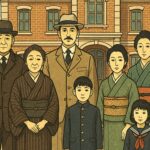
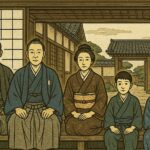
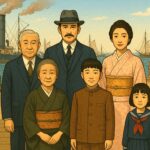
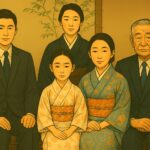
![[Part 2] Who is the Oshu "Maikusa Blacksmith"? Explaining the influence they had on the development of Japanese swords! A swordsmith offering a sword to the shrine (image)](https://jp.neft.asia/wp-content/uploads/2025/09/381015b3269eee5482fc4d248acc74b3-150x150.jpg)
![[Oshu City, Iwate Prefecture] Esashi Fujiwara no Sato is a famous filming location for taiga dramas! You can see, touch and experience the beauty of the Heian period. 97a034bdbeec451eb4c500ae66e86e9c m](https://jp.neft.asia/wp-content/uploads/2017/06/97a034bdbeec451eb4c500ae66e86e9c_m-150x150.png)
![The "Devil's House" is a demon museum where demons from all over the world gather! [Kitakami City, Iwate Prefecture] demon of the world](https://jp.neft.asia/wp-content/uploads/2018/09/PXL_20240218_035145749-150x150.jpg)
![Is "Hachimantai" Table Mountain in Tohoku? A paradise of a plateau between volcanoes and marshlands [Akita/Iwate] Sea of clouds and Mt. Iwate view from Hachimantai](https://jp.neft.asia/wp-content/uploads/2025/06/25437226_m-150x150.jpg)
